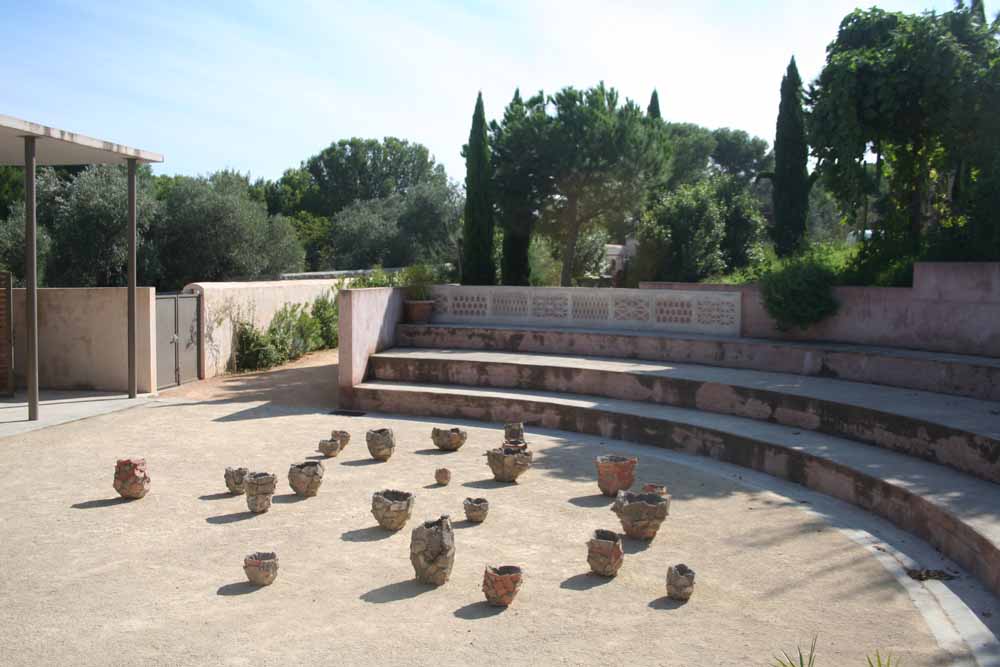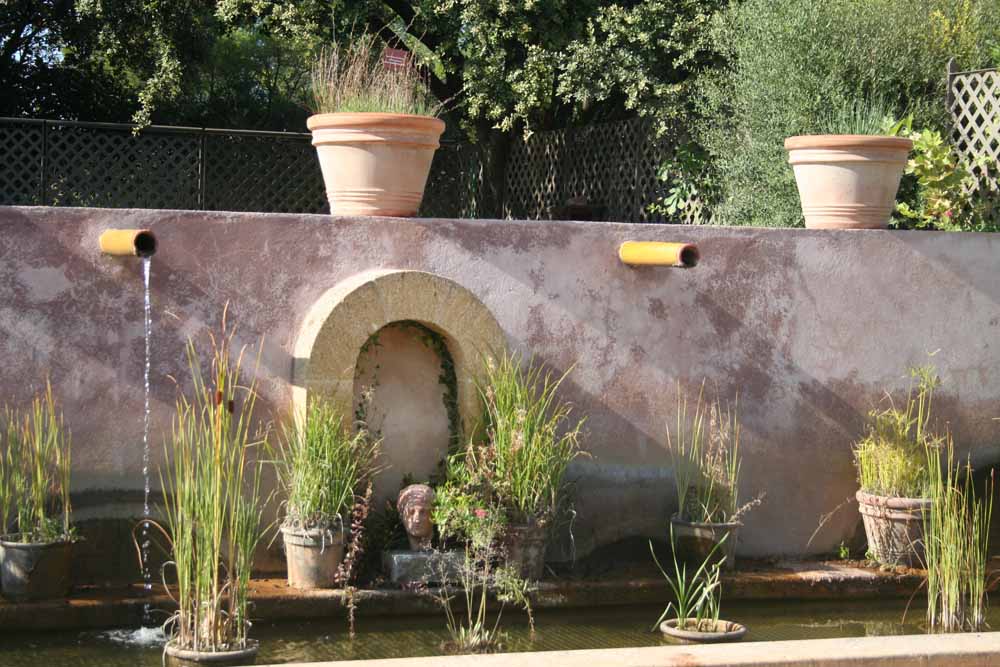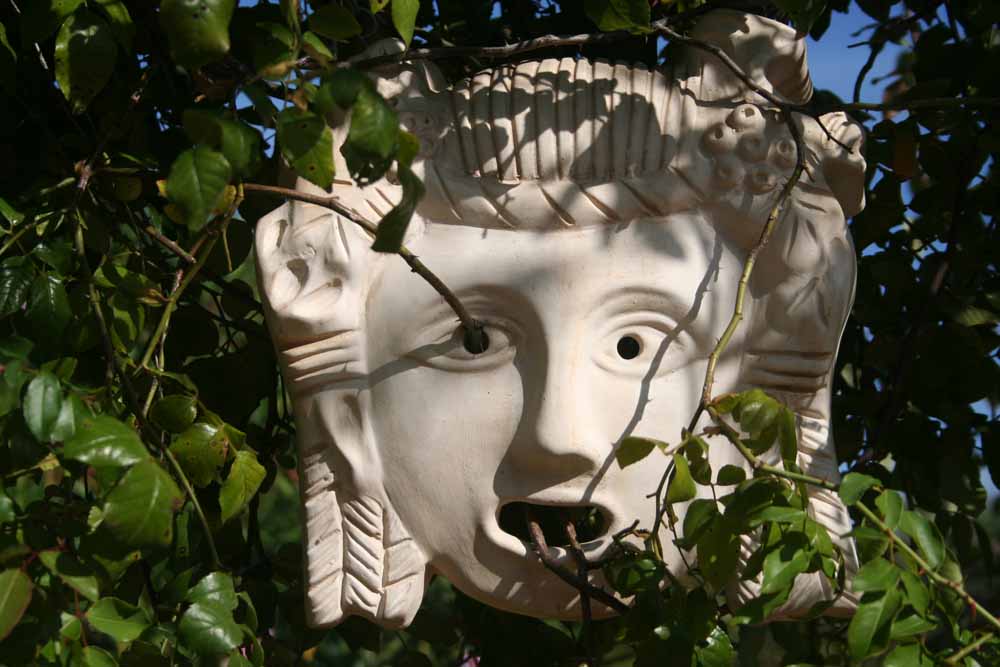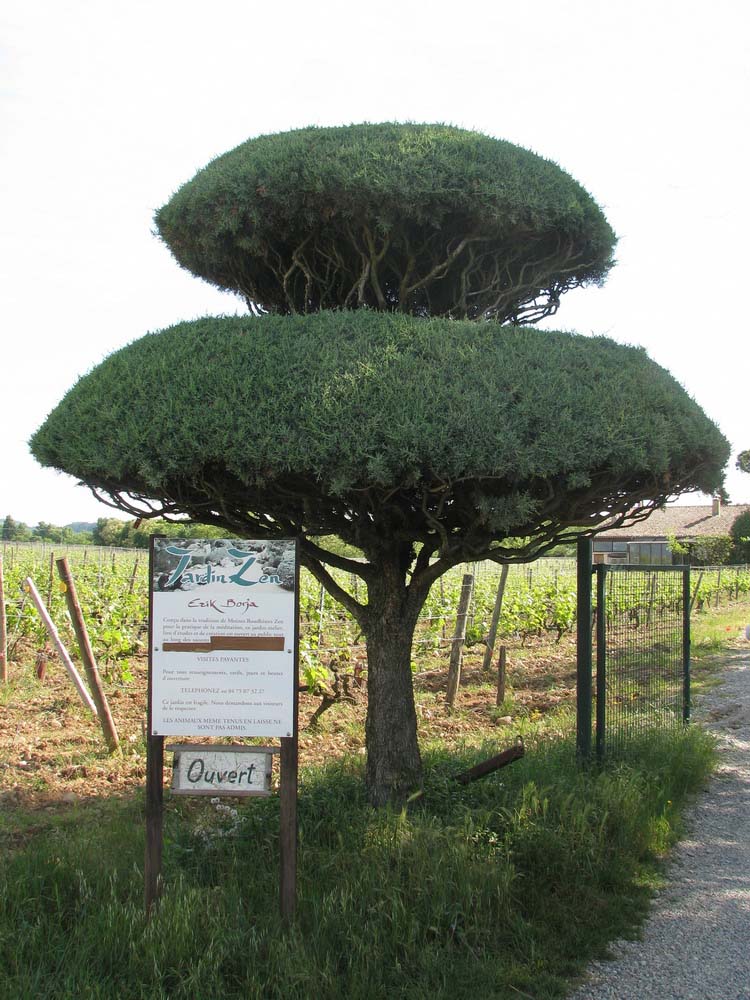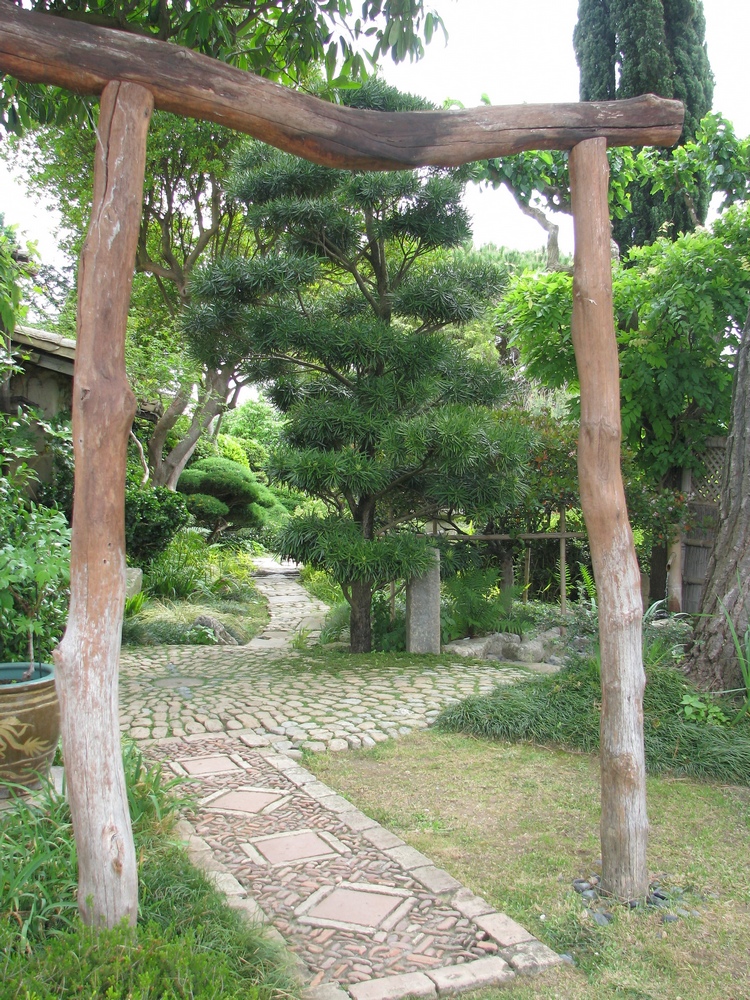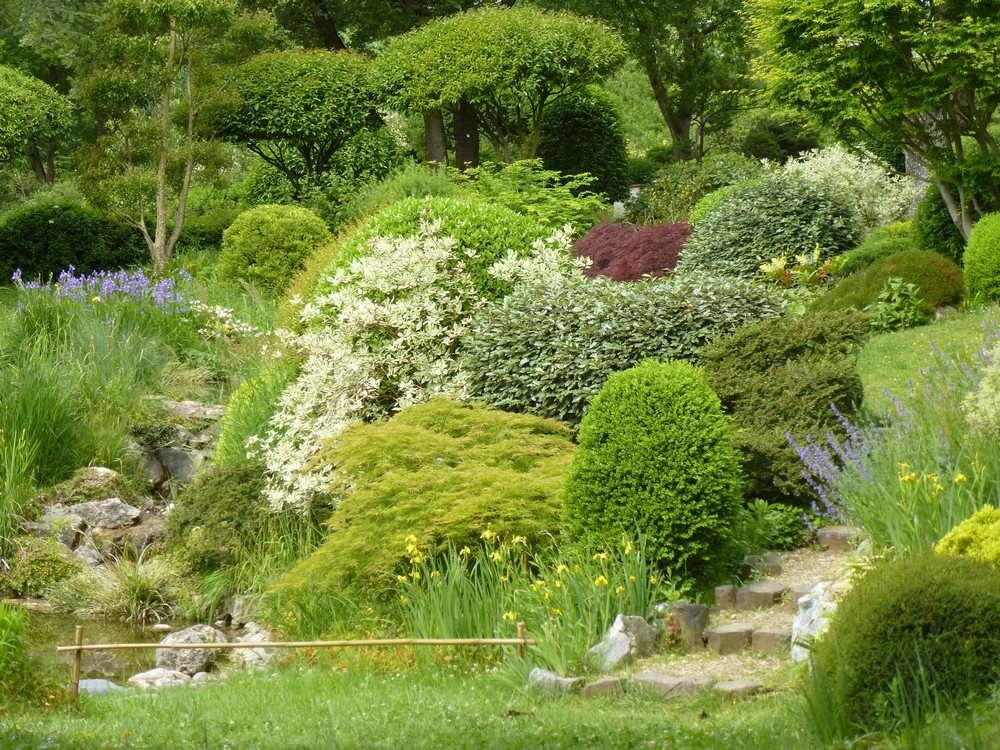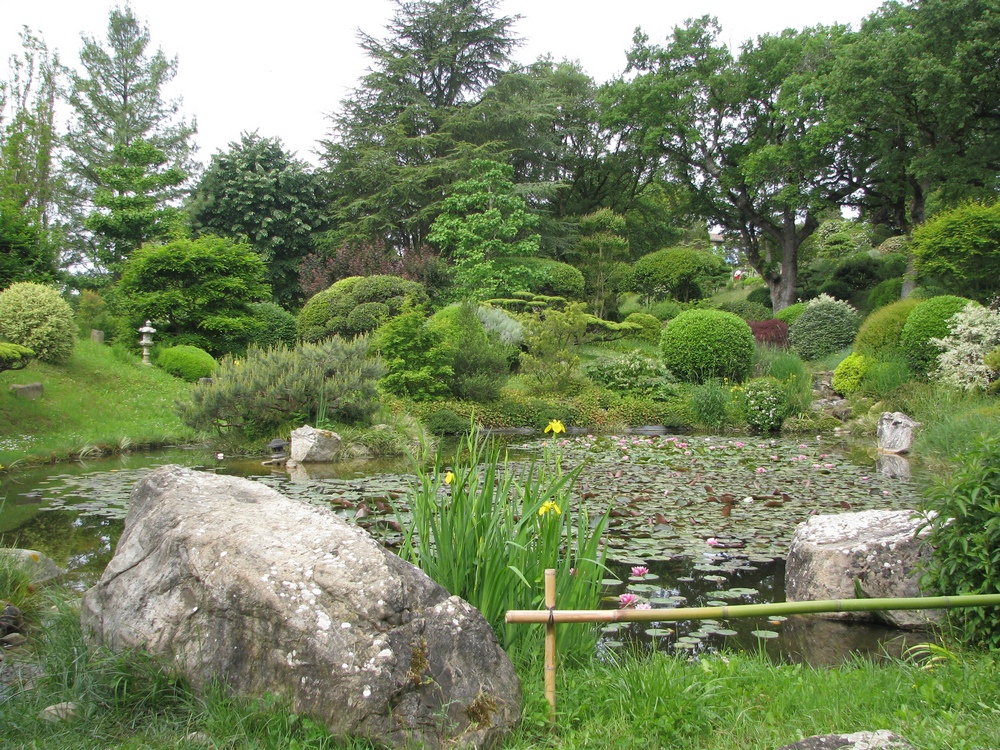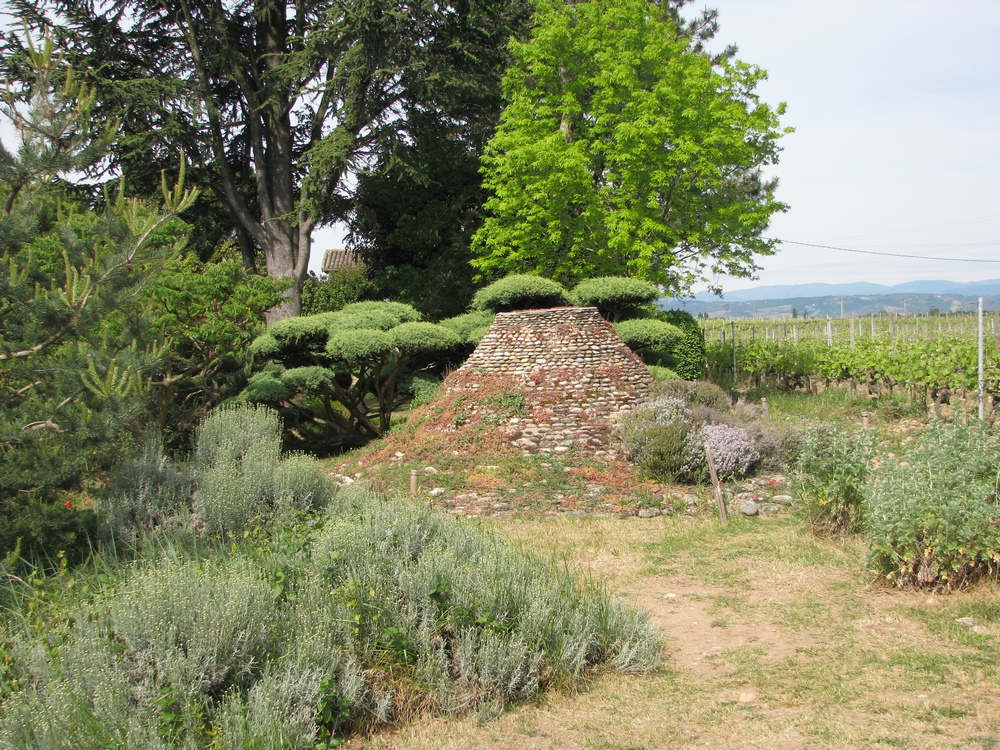Le Jardin Antique Méditerranéen, Balaruc-les-Bains
Click on the images to enlarge them / Cliquez sur les images pour les agrandir
Recently your author was honoured to lead a small party of keen gardeners and garden-lovers to Montpellier in the south of France, almost but not quite on the shores of the Mediterranean Sea. A highlight of the tour was a visit to the Jardin Antique Méditerranéen at Balaruc-les-Bains on the Étang de Thau – a broad, shallow bay on the coast. The garden is intended to replicate the mood and reality of a colonial Roman garden of some 2000 years ago.
Imagined, created, and curated by Laurent Fabre the garden is remarkable for its serene atmosphere and spirituality. Each and every part, all connected and continuous, is both beautiful and a powerful evocation of an ancient Roman garden with its links to the landscape of man and the landscape of the gods. The garden is not modelled on a peristyle or atrium typical of a town house but on the more expansive and close-to-nature examples of the villa rustica – the country establishment.
Of long standing in Roman culture, the country place exemplified the ideas of self-sufficiency and independence which were held as the essence of a Roman man’s status and dignity. It was in its most frequent expression a small farm. Such is the way of things that the most familiar versions of the villa rustica are the archeological remains of larger, more grandiose country villas such as those found at Oplontis, or those described by Pliny as the ideal retreats from the congested and busy cities. The Villa of Poppaea, at Oplontis is a luxurious mansion by any standard with many refinements such as would befit the wife of an Emperor, in this case thought possibly to be the second, murdered wife of Nero.
The landscape we see at the Jardin Antique Méditerranéen is much simpler and more intimate, the sort of garden that might have been made around a farm and villa intended in equal parts to be for rest and recreation – a hobby farm, a place where a busy citizen could escape for a while from the hard world of ‘negotium’ (business).
So, to begin with, put all ideas of the Getty Museum at Malibu in California out of your mind. This place is nothing like a replica of anything, especially the Villa dei Papiri at Herculaneum, on which the museum is modelled. A visit to the garden begins in a lecture room with a large mural as a backdrop. The mural is derived from those found in Pompeii and is representational of a Roman garden with fruit trees, a fountain, flowers, herbs, birds and a low fence.
Each object depicted has a rich text behind it; for instance, the apple tree references the goddess Pomona while the fence references philosophical concepts behind the human condition and safety, enclosure, apart-ness and separation. The water of the fountain harks back to the nymphs and spirits of the countryside that Romans ‘saw’ everywhere.
Outside, a small amphitheatre sets the scene of an academic sacred grove where learning and discussion can take place. This conceptualises the Roman ideas of being a civilised man pursuing his ‘otium’, or relaxation, in the enjoyment of (male) company and philosophical discussion. From there the garden develops as a stroll garden leading visitors through productive gardens with herbs – medicinal and aromatic, and vegetables, then through a vineyard, olive plantation and into a grove of trees, at the conclusion of which is a garden of mortality and death represented by a grave in a sacred precinct, planted with rosemary, myrtle, pencil pines and hemlock – the symbolism of which remains potent to this day. To emphasise the concept, a bleached skull completes the picture.
From then on, the garden takes on a more recognisable Roman aspect, with a series of stone colonnades swathed in shady vines raised on a terrace that gives views back over the groves, vineyards and productive gardens. From here a garden visitor can see and hear a nymphaeum, a series of small spouts dribbling water into a shallow trough set at ground level and planted with aquatic plants. Above it is a large, raised, rectangular reservoir of water fed from a spring – a real spring that has been known and regarded as sacred since Roman times at least. The spring-head is marked by a small shrine featuring statues of the gods of family life (Lares). Having established the many connections between the gods in their heaven and man on his earth, the garden then moves into a more secular mode with a pair of borders featuring a very Roman mix of flowers, herbs and vegetables, then a topiary garden and finally a representation of a wilderness.
In Roman terms, M. Fabre would be the villicus of the garden – the Head Gardener but what of the other staff – the arborator, tree expert; the vinitor – the vine expert, the olitor – the veggie grower, the aquarius – who watered by hand, and the toparius – who shaped the evergreens? None seemed present on the day I visited though there were a number of volunteer scribes in the atrium. Somehow M. Fabre manages the entire production but, like most slave-run places, the presentation is Roman, not American, so the presentation is rustic – and very authentic for it.
At every step Laurent explains the linkages which were once so obvious to ancient Romans and Greeks, and now so sadly lacking from our own insight into the meaning of gardens. We are the poorer for not having that rich background tapestry of myth, lore, religion and tradition that imbued every aspect of daily life in ancient times. While the skull is pretty much self-explanatory, though possibly not a feature of real Roman gardens, there are strange white ceramic masks hanging from the shrubberies here and there; these are replica oscilla – in this case representing theatrical tragedy. Sad-faced and open-mouthed, they remind the visitor that fate is ever-present, even in a delight-filled garden such as this. The Romans knew that the gods, however self-centred and disdainful of Man, cast their careless whims on all below them.
While it is almost impossible to ‘read’ modern gardens in the manner the ancients did, we can at least recognise the strong links between the Romans, the Mediterranean climate they experienced in much of the Roman empire, and the influence it exerted on their lifestyle. The lessons are there for us to read and understand: climate compatible gardening, the use of a (relatively) simple, restrained plant palette, water-wise and seasonal planting, the contrast between formal and informal elements within garden spaces, the combination of productive and decorative components, and the use of gardens as living spaces, even those associated with death, as well as those associated with eating, talking, listening, learning and loving.
They knew a thing or two those ancient Romans, didn’t they?
Text and photos: Trevor Nottle, South Australia MGS
![]()


